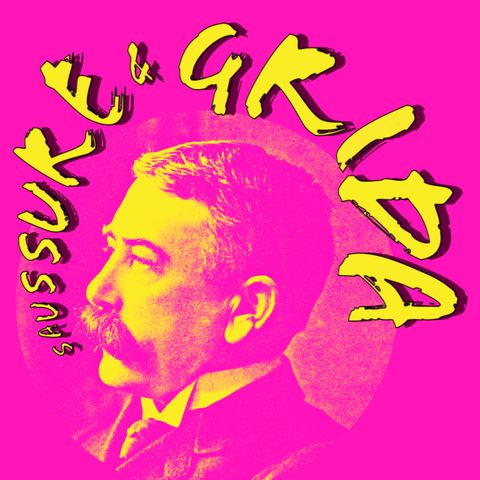21. Metafore e mente incarnata

Download and listen anywhere
Download your favorite episodes and enjoy them, wherever you are! Sign up or log in now to access offline listening.
Description
In questa puntata, esploriamo come le metafore non siano solo un elemento della lingua letteraria, ma abbiano un ruolo fondamentale nella nostra comprensione del mondo. A partire dal libro Metaphors...
show moreGrafiche: Gianluca La Bruna
La sigla è stata prodotta da White Hot e fornita da https://freebeats.io
Fonti:
- Gentner, D., & Bowdle, B. (2008). Metaphor as structure-mapping. In R. Gibbs (Ed.), The Cambridge handbook of metaphor and thought (pp. 109–128). Cambridge University Press.
- Gibbs, R. (1994). The Poetics of Mind: Figurative Thought, Language, and Understanding. Cambridge University Press.
- Gibbs, R. (2011). Evaluating conceptual metaphor theory. Discourse Processes, 48:529-562.
- Gibbs, R. (2013). The real complexities of psycholinguistic research on metaphor. Language Sciences, 40:45–52.
- Harris, R.A. (1993). The Linguistics Wars. Oxford: Oxford University Press.
- Kertesz, A., Rakosi, C., & Csatar, P. (2012). Data, problems, heuristics and results in cognitive metaphor research. Language Sciences, 24:715-727.
- Lacey, S., Stilla, R., & Sathian, K. (2012). Metaphorically feeling: Comprehending textural metaphors activates somatosensory cortex. Brain and Language, 120(3):416-421.
- Lakoff, G., & Johnson, M. (1980). Metaphors We Live By. Chicago: University of Chicago Press.
- Lakoff, G., & Johnson, M. (1999). Philosophy in the Flesh. New York: Basic Books.
- Núñez, R.E., & Sweetser, E. (2006). With the Future Behind Them: Convergent Evidence From Aymara Language and Gesture in the Crosslinguistic Comparison of Spatial Construals of Time. Cognitive Science 30(3): 401–450.
- Proulx, P. (1987). Quechua and Aymara. Language Sciences 9(1):91-102.
- Richards, A. (1936). The Philosophy of Rhetoric. Oxford, Oxford University Press.
- Rovelli, C. (2012). Il tempo non esiste. Carlo Rovelli at TEDx Lake Como
https://www.youtube.com/watch?v=xeHHjGKwZWM&ab_channel=TEDxTalks - Tovey, M. (2023). Spatial Metaphors as Linguistic Primitives: A Comparison of UP-DOWN Metaphors in Three Languages. The University of Western Ontario Journal of Anthropology, 25(1):152–159.
Information
| Author | Irene |
| Organization | Irene Lami |
| Website | - |
| Tags |
Copyright 2024 - Spreaker Inc. an iHeartMedia Company
